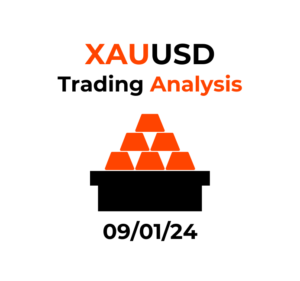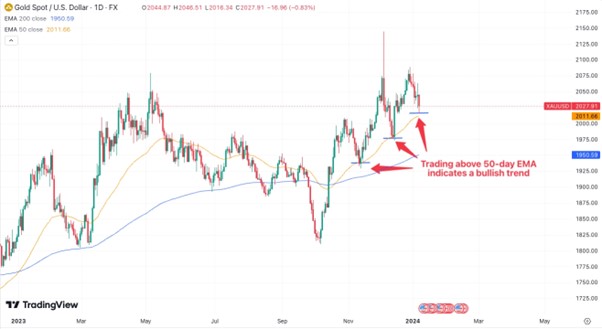Market Recap and Influences
The gold market experienced fluctuations during the previous week, with geopolitical tensions, economic indicators, and Federal Reserve policy expectations impacting its movements. The U.S. labor market’s unexpected strength, as reflected in the Non-Farm Payrolls report, influenced market perceptions about the Federal Reserve’s rate policy, leading to adjustments in gold prices.
Economic Data and Federal Reserve Policy
Recent U.S. economic reports, particularly the labor market data, have led to a reassessment of the timing and extent of potential Federal Reserve rate cuts. The stronger-than-anticipated job growth dampened immediate expectations for rate reductions, affecting gold’s trajectory. However, weaker service sector data hinted at a potential economic slowdown, providing some support to gold prices.
Market Reactions to Employment Data
The employment data released caused significant volatility in the gold market. Initially, gold prices dropped following the report but later recovered, illustrating the market’s sensitivity to economic indicators and their implications for Federal Reserve policy.
Technical Analysis and Market Sentiment
Gold prices have shown resilience, trading above key moving averages, indicating a bullish trend. However, the market’s reaction to the recent employment data suggests a cautious approach among traders, awaiting further economic reports and Federal Reserve communications.
Week Ahead: Key Economic Reports
The upcoming week’s focus will be on critical economic reports, including inflation data, which could significantly influence the Federal Reserve’s rate decisions and, consequently, gold prices. Market participants are currently weighing the probability of a rate cut by the Federal Reserve, with expectations subject to change based on upcoming economic data.
Short-Term Forecast
Given the current market conditions, including the recent U.S. labor market data and upcoming economic reports, the short-term outlook for gold remains cautious. Traders are closely monitoring U.S. Treasury yields and the U.S. dollar’s strength, as well as awaiting further clarity from inflation reports and Federal Reserve communications. These factors will play a crucial role in shaping gold’s price movements in the short term.
Conclusion
For the upcoming week, gold traders should remain attentive to economic data releases and their potential impact on Federal Reserve policy decisions. The market’s response to the upcoming inflation reports will be particularly crucial in determining gold’s short-term direction. As always, geopolitical developments and shifts in market sentiment could also influence gold prices, making it essential for traders to stay informed and flexible in their strategies.


